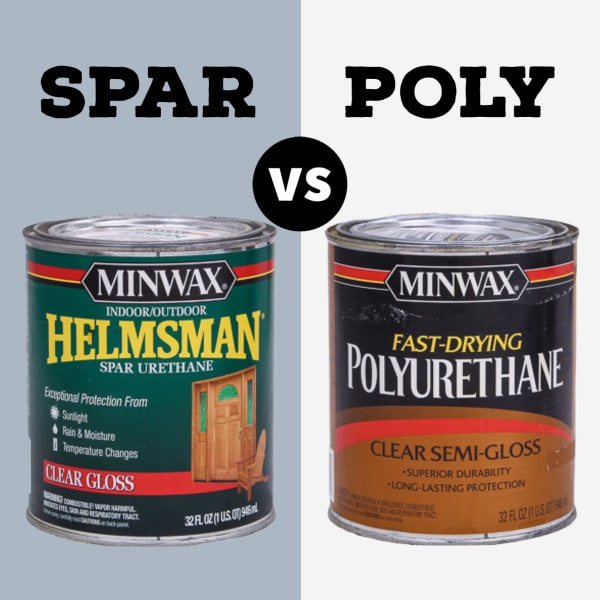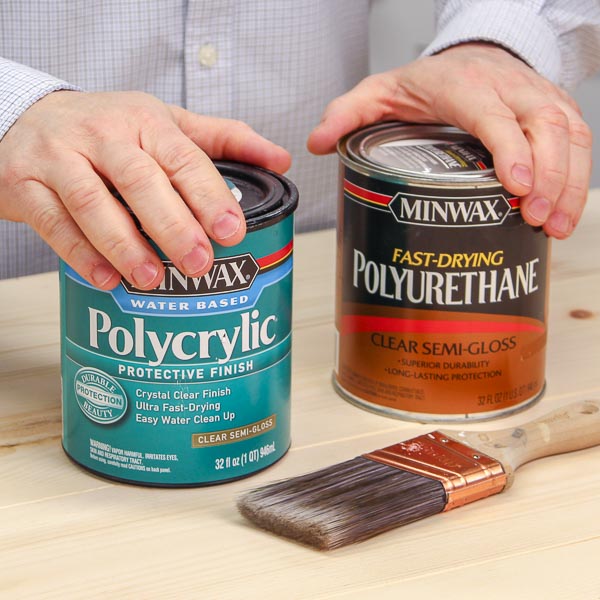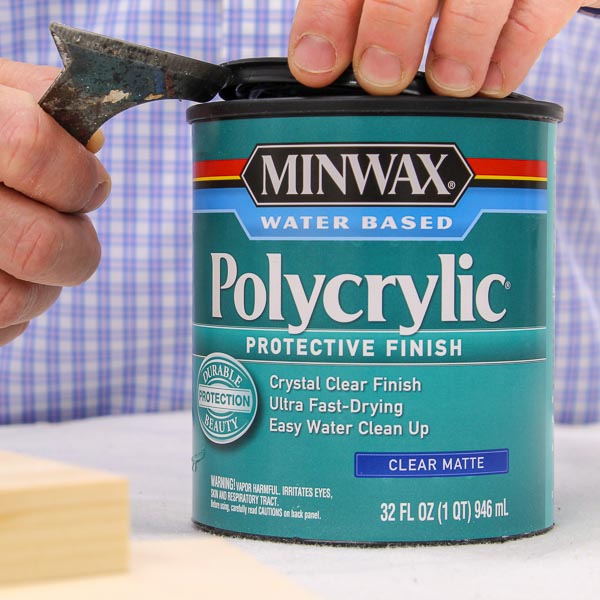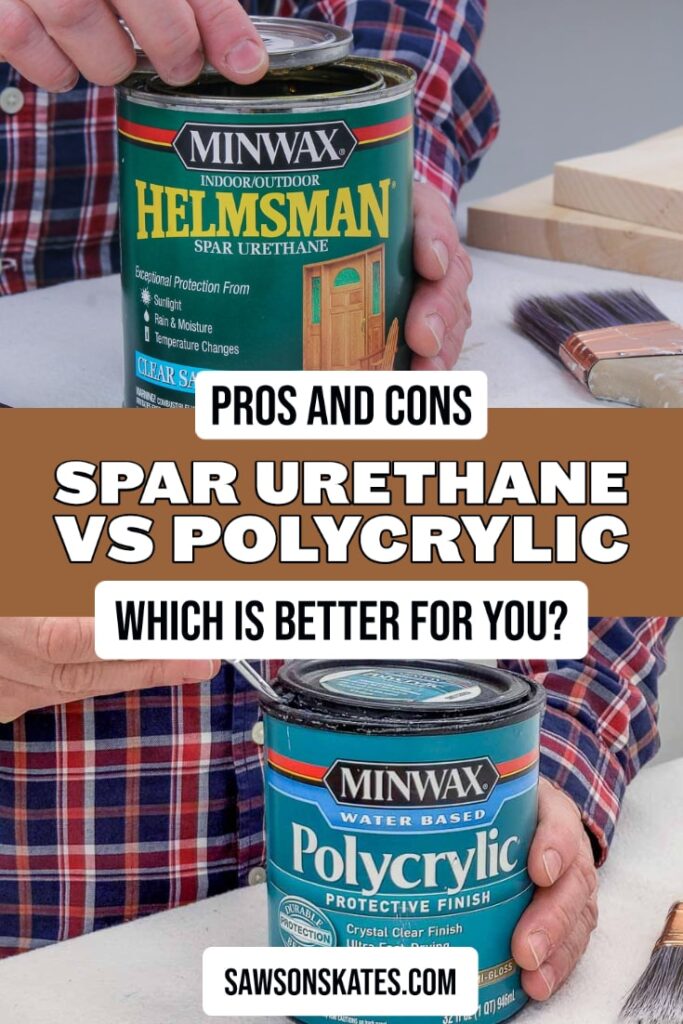Spar Urethane vs Polycrylic (Which is Right for You?)
Trying to decide between spar urethane and Polycrylic? I’m breaking down their pros and cons so you can choose the best one for your project.
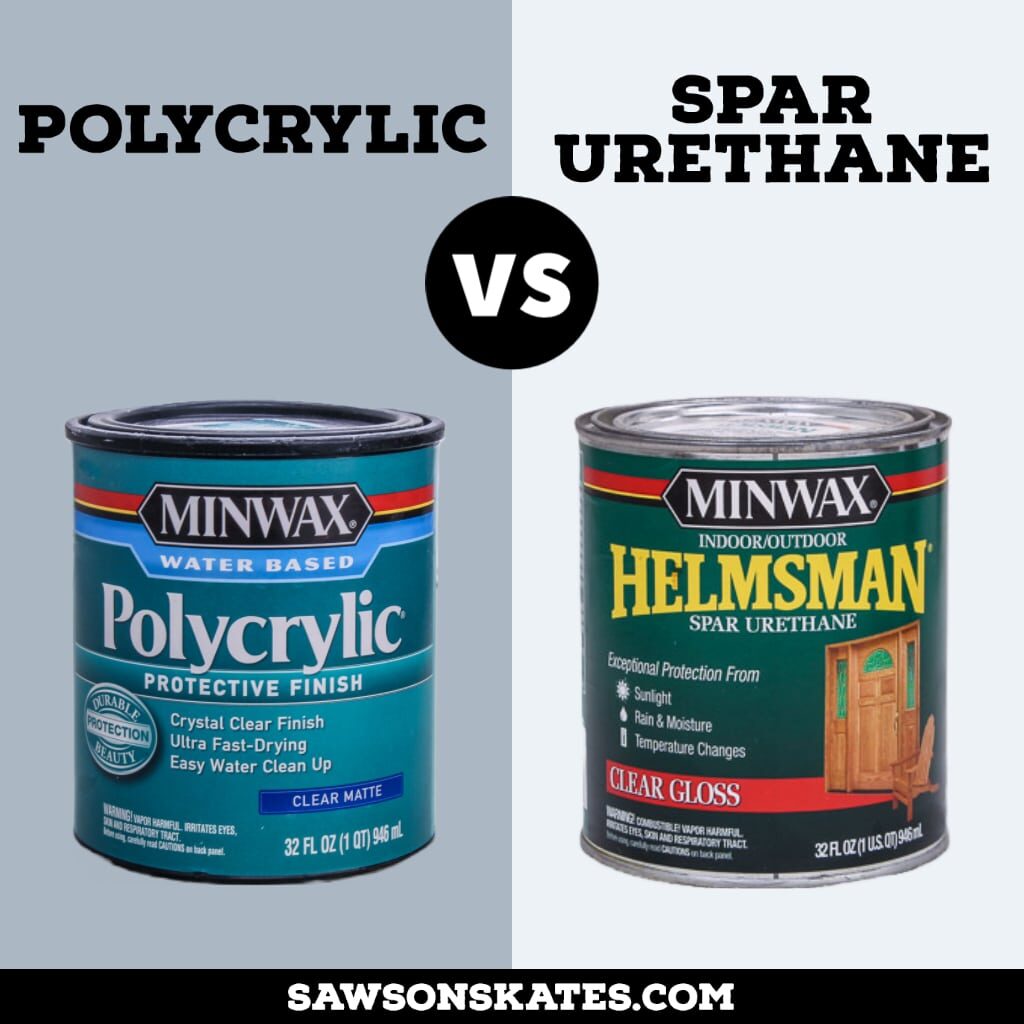
Are you wondering what sealer to use on your woodworking or DIY project? Two options you may have come across are spar urethane and Polycrylic. Both protect against wear and tear; however, each is better suited for different applications.
In this article, I’m comparing Polycrylic and spar urethane side-by-side, outlining their differences, the benefits and drawbacks of each, and helping you decide which is best for your project.
Table of Contents
- What Is Spar Urethane?
- What is Spar Urethane Used For?
- Spar Urethane Pros and Cons
- What is Polycrylic?
- What is Polycrylic Used For?
- Polycrylic Pros and Cons
- What are the Differences Between Polycrylic and Spar Urethane?
- Which Should You Use?
This article contains affiliate links. If you purchase from these links, I may earn a small commission at no additional cost to you. Visit my site policies for more information.
What Is Spar Urethane?
Spar urethane is a protective sealer for wood surfaces, boasting extraordinary durability and self-leveling capabilities. It’s often compared to polyurethane, but they are two different products.
Related: Spar Urethane vs Polyurethane (Differences + Which to Use)
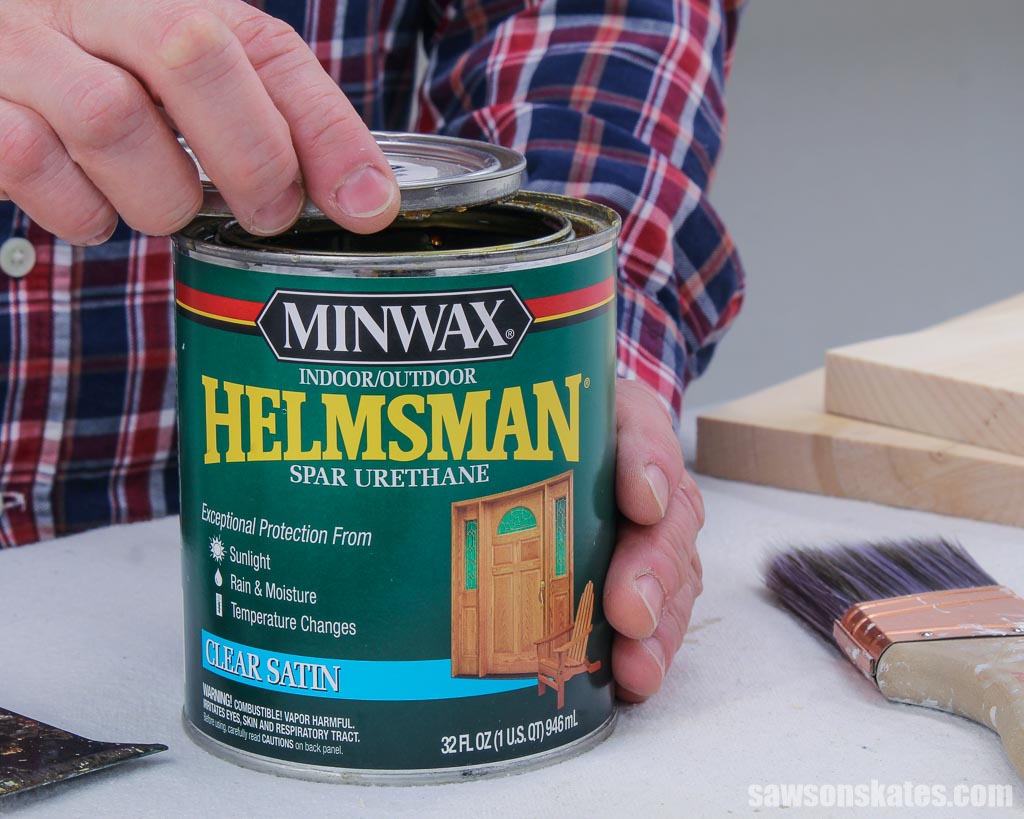
Originally an oil-based coating used in boat building, spar varnish was developed to preserve the wooden poles, known as spars, which support or carry a boat’s sail.
Spars are constantly subjected to harsh conditions, such as wind, water, temperature changes, and UV light from the sun. As a result, wooden spars expand and contract in response to varying temperatures and humidity levels.
Spar varnish was formulated to resist the elements, and when dry, remains flexible enough to expand and contract with the wood’s movement.
Related: Mistakes with Wood Can Cause Your DIY Furniture to Crack
Spar urethane also contains additives that protect against the sun’s harmful UV rays, which can cause damage and fading.
What is Spar Urethane Used For?
Spar urethane is typically used as a protective top coat on outdoor projects, such as furniture, like chairs, tables, benches, and other surfaces like entry doors that are exposed to the elements. For example, I used it to seal my wooden overhead garage door and my DIY truck camper’s floor.
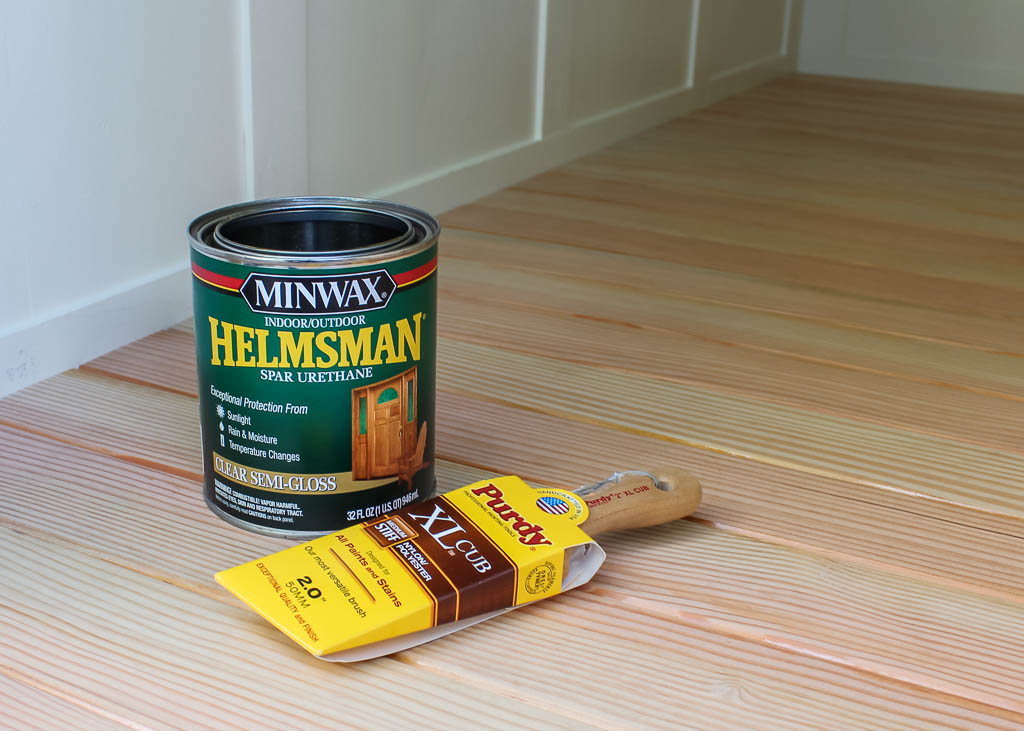
It’s also great for sealing indoor woodworking projects that frequently come into contact with water or moisture, like window sashes and bathroom vanities.
Types of Spar Urethane
Spar urethane has come a long way from its original oil-based composition and is now available in oil- and water-based versions.
Oil-based spar urethane is combustible, emits toxic fumes, and can harm the environment, while water-based is a more eco-friendly solution, producing fewer fumes and is non-flammable.
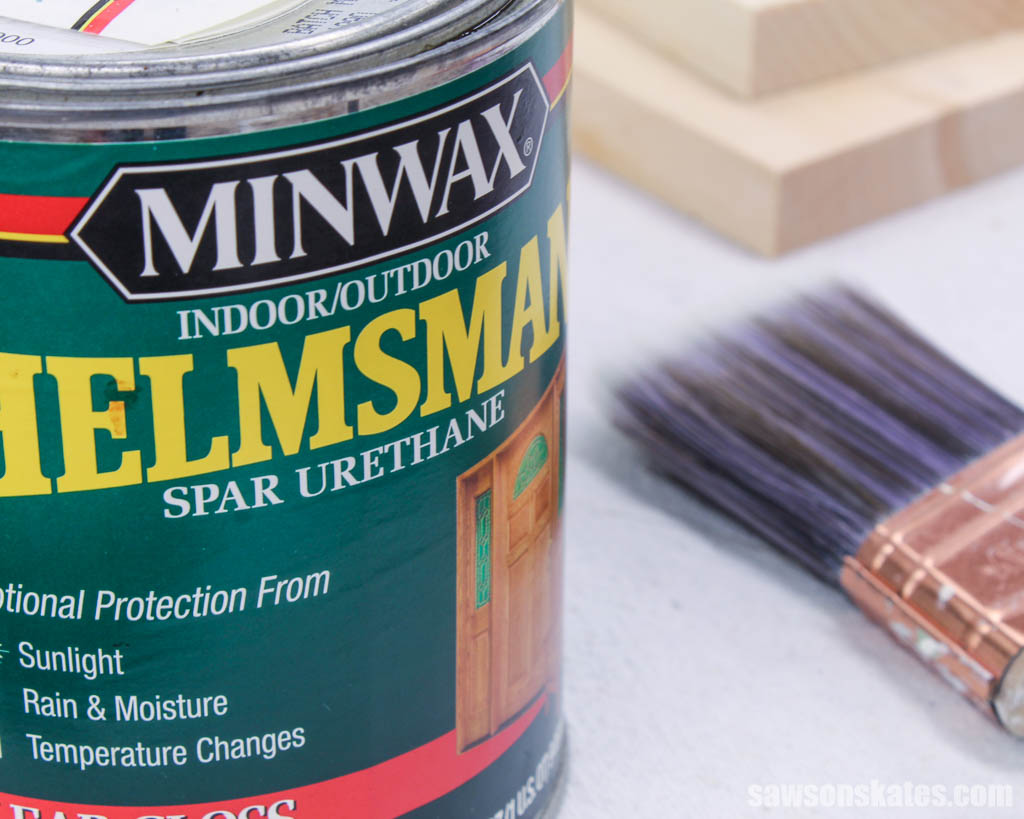
What Does Spar Urethane Look Like?
Oil-based spar urethane is transparent but contains resin, giving it a slightly yellowish tint. This amber color gives wood a warm glow, but depending on your preference, it may come across as too yellow on lighter woods
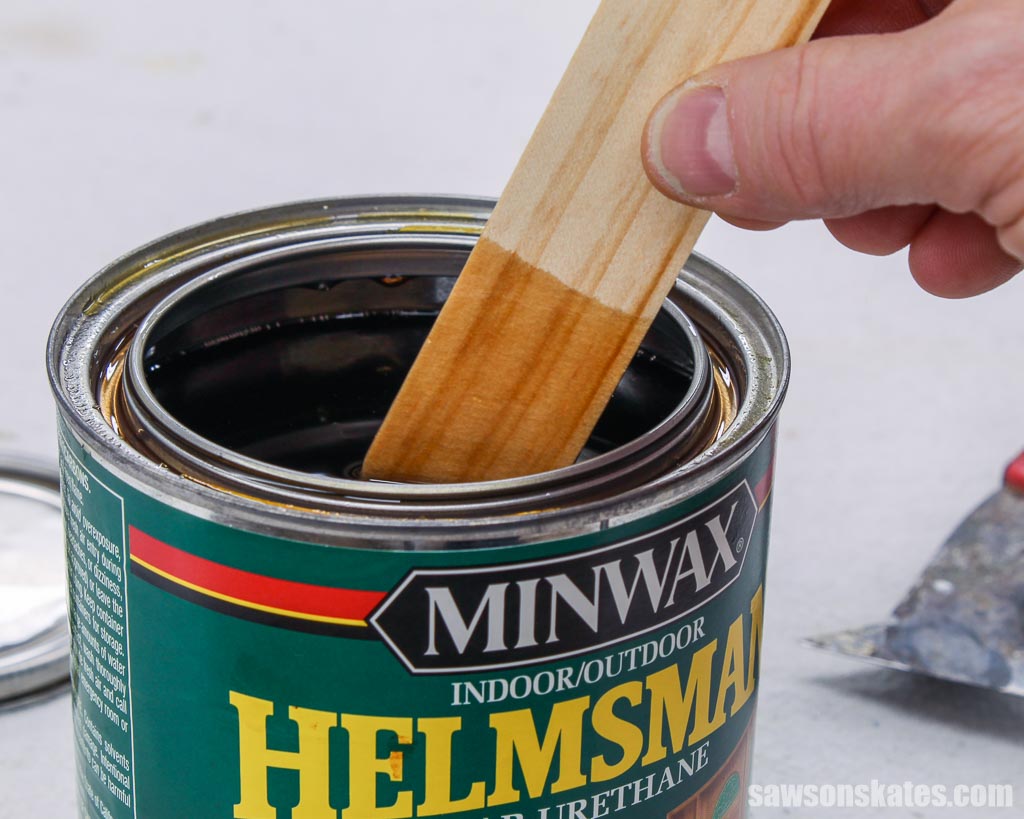
On the other hand, water-based spar urethane dries crystal clear, so your wood’s color will shine through.
When choosing between oil- and water-based spar urethane, another difference is that oil-based adds a sense of depth to the wood and makes the grain “pop,” whereas water-based products don’t offer this same effect. If you want to enhance the wood’s natural beauty, consider using an oil-based product.
You can buy spar urethane in various sheens, ranging from satin to gloss. Sheen measures the degree of shine or light reflection produced by coating.
Satin has a low sheen and is best for projects that don’t require an overly glossy finish. Gloss has a high sheen and works well for projects needing a more dramatic shine.
How Do You Apply Spar Urethane?
You can apply liquid spar urethane with a natural bristle brush or using a paint sprayer. You can also buy it in an aerosol spray can.
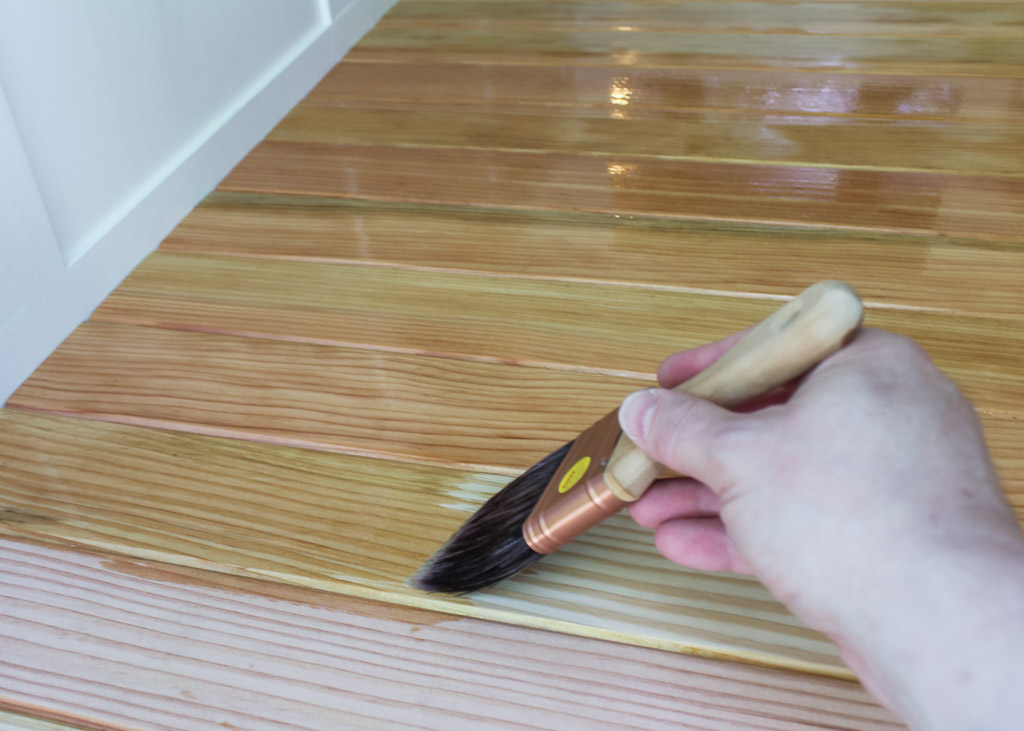
To wipe it on, mix equal parts of oil-based spar urethane with mineral spirits and apply the mixture to your project’s surface using a clean cloth.
Related: Mineral Spirits vs Paint Thinner (Differences & Uses)
Spar Urethane Pros and Cons
Pros
- Ideal for outdoor surfaces, but can also be used indoors
- Offers excellent protection against weather, water, and UV rays
- Available in oil-based and water-based versions
- Can be applied with a brush or sprayer or wiped on with a rag
- Water-based dries crystal clear
Cons
- Oil-based has toxic fumes and is combustible
- Water-based does not enhance the wood grain
- Oil-based gives light-colored woods a yellowish tint
What is Polycrylic?
Polycrylic is Minwax’s trademarked name for its top coat that protects wood surfaces. It’s frequently confused with polyurethane, but they are two different products.
Related: Polycrylic vs Polyurethane (Are They The Same?)
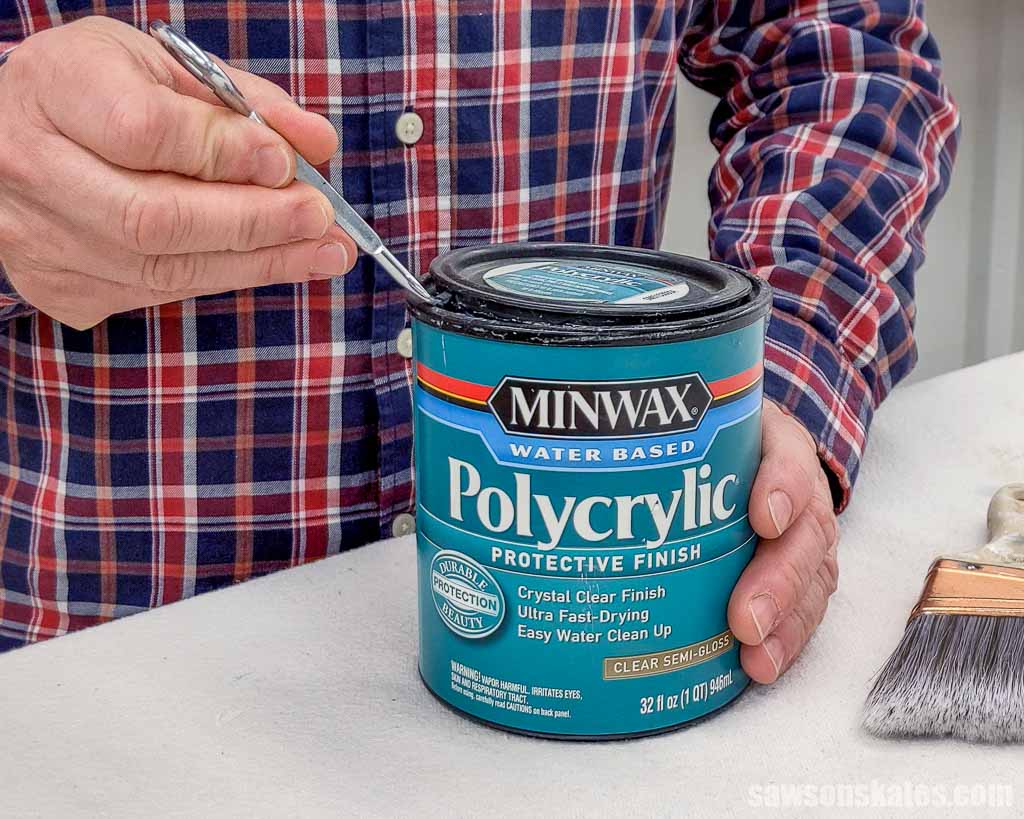
What is Polycrylic Used For?
Polycrylic is a protective sealer for indoor projects such as furniture like bookcases, desks, and side tables.
It works well on projects exposed to minimal moisture, such as indoor furniture and cabinets.
Unlike spar urethane, it’s not as resistant to heat and moisture, so it’s not the best choice for dining tables that come into contact with hot dishes or bathroom vanities exposed to water.
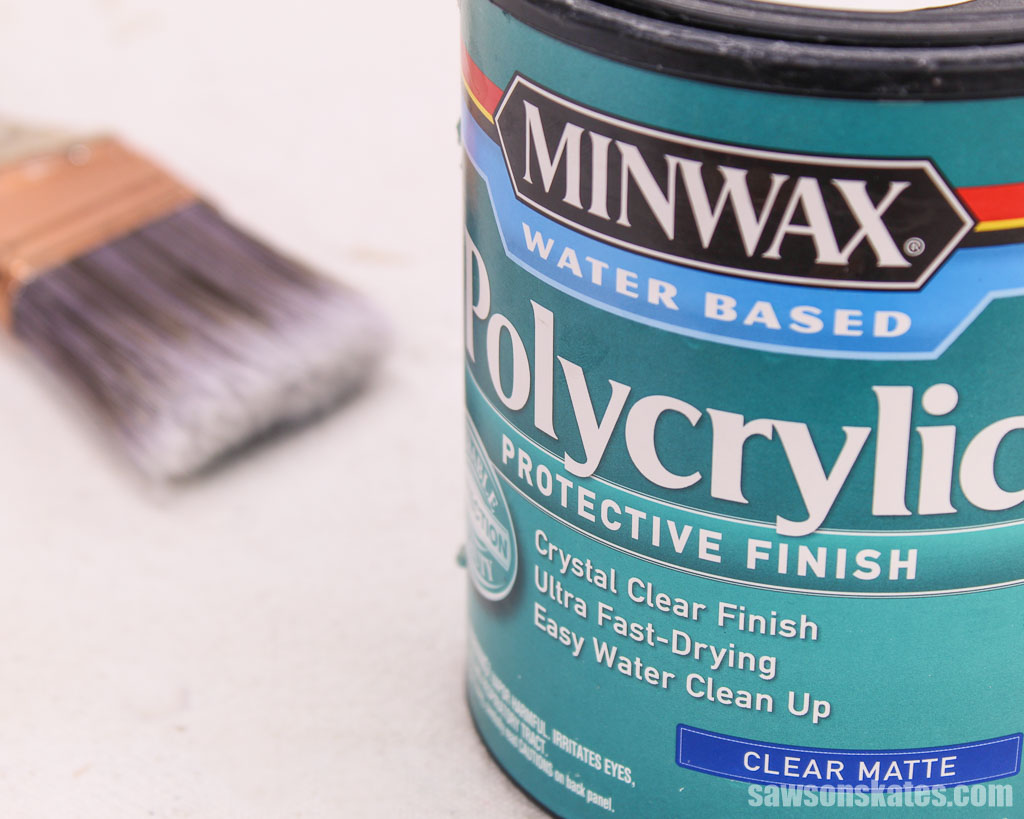
Similar to latex paint, I’ve found surfaces coated with Polycrylic can occasionally stick together. I stacked the shelves for this cupcake stand and this spice cabinet for a few weeks, and when I tried to move them, I discovered they were stuck together.
If you’ll need to stack your projects for any length of time, I recommend using an oil-based sealer that won’t cause the surfaces to stick.
As I mentioned, Polycrylic is an indoor sealer, so it’s unsuitable for protecting outdoor projects. I belong to several Facebook woodworking groups, and members frequently say they use Polycrylic to seal their cornhole boards, and it holds up well.
That said, I wouldn’t recommend Polycrylic for outdoor projects because it’s not water-resistant and doesn’t protect against UV damage like spar urethane.
Types of Polycrylic
Polycrylic is only available in water-based, it’s not combustible, and while it does have a slight smell, it’s not as stinky as oil-based sealers.
What Does Polycrylic Look Like?
When you open a Polycrylic container, you’ll notice it’s milky white; however, it dries crystal clear on light-colored woods such as pine, birch, and maple. But don’t go overboard when applying it to dark-colored woods, as it can cause them to appear milky.
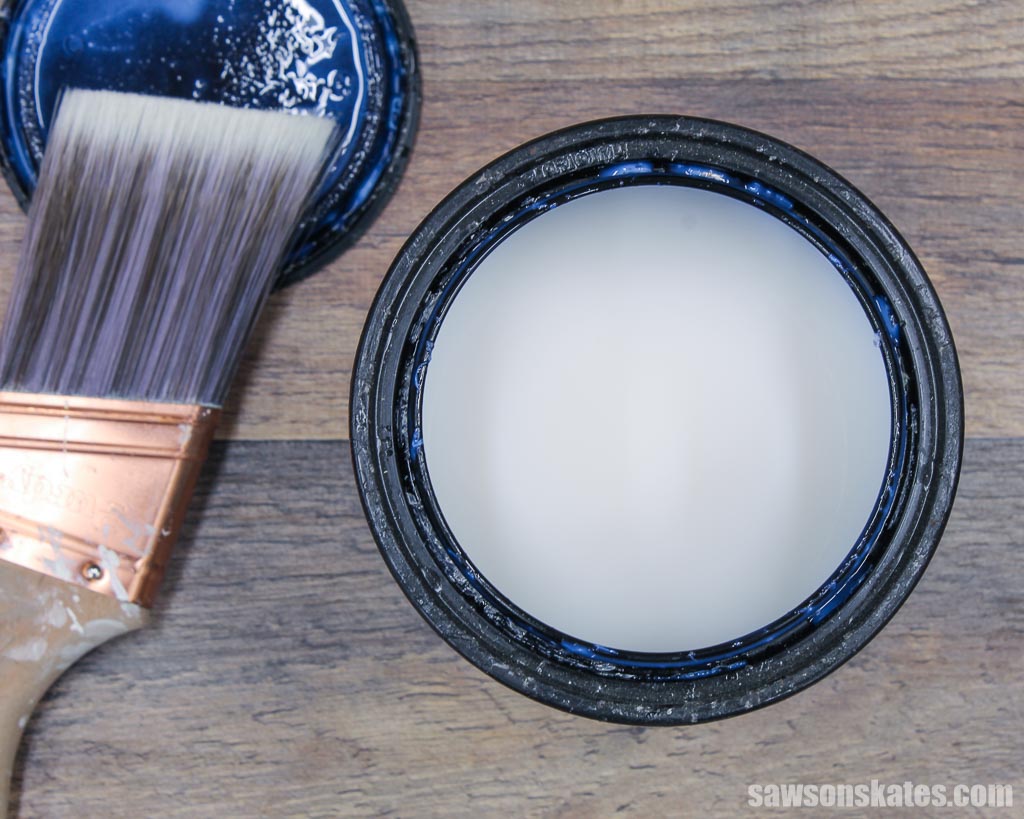
Being water-based, Polycyrlic does not have the same ability to bring out wood’s natural beauty as an oil-based sealer. Therefore, consider using an oil-based product if you want your project’s wood grain to pop.
Polycrylic is available in flat, matte, satin, semi-gloss, and gloss sheens.
How Do You Apply Polycrylic?
You can apply liquid Polycrylic with a synthetic bristle brush or using a paint sprayer. You can also buy it in an aerosol spray can.
Polycrylic’s runny consistency is best suited for horizontal surfaces. You’ll need to watch for drips when applying it to vertical ones, such as doors or the sides of bookcases.
Related: How to Apply Polycrylic (Without Streaks or Brush Strokes)
Polycrylic Pros and Cons
Pros:
- Dries crystal clear
- Relatively easy to use and available in a variety of sheens
- Nonflammable
- Low odor compared to oil-based top coats
Cons:
- Not resistant to heat and moisture
- Not as durable as spar urethane
- Can cause surfaces to stick together if stacked for a period of time
- Not resistant to UV damage or extreme temperatures
- Does not bring out the wood’s natural beauty like an oil-based sealer
What are the Differences Between Polycrylic and Spar Urethane?
Now that we’ve covered each top coat’s basics, let’s look at the differences between Polycrylic and spar urethane.
Durability
The primary difference between spar urethane and Polycrylic is that spar urethane is more durable, providing superior protection against extreme temperatures, moisture, and UV damage.
Spar urethane is the best choice for outdoor projects such as benches, planters, patio furniture, and indoor surfaces exposed to moisture, like window sashes. Polycrylic is better suited for indoor projects such as shelves, bookcases, and side tables that won’t be exposed to extreme temperatures or moisture.
Appearance
Oil-based spar urethane contains resin that casts a yellowish hue on light-colored woods, while water-based spar urethane and Polycrylic dry crystal clear. However, applying thick coats of Polycrylic on dark-colored woods can give them a milky appearance.
Oil-based spar urethane enhances the wood’s natural beauty, making it look richer and giving it a warm glow, while Polycrylic and water-based spar urethane do not have the same effect.
For projects that don’t require an intense shine, like picture frames and wooden Christmas ornaments, I like Polycrylic because it comes in flat and matte sheens. In contrast, spar urethane is only available in satin, semi-gloss, or gloss finishes.
Application
Polycrylic has a runnier consistency than spar urethane, making it tricky to apply on vertical surfaces, while spar urethane’s thicker consistency is ideal for both vertical and horizontal surfaces.
Which Should You Use?
Both spar urethane and Polycrylic are excellent sealers, but which one you should use depends on your project’s location and intended purpose.
If your project is located outdoors or in an area exposed to water, spar urethane provides superior protection against extreme temperatures, UV damage, and moisture.
If your project is located indoors and won’t be exposed to extreme temperatures or moisture, Polycrylic is a great choice. It’s available in flat, matte, satin, semi-gloss, and gloss sheens, giving you many options for how shiny your project will look when it’s finished.
No matter which sealer you choose, be sure to follow the manufacturer’s instructions for application and drying time.
Final Thoughts
Spar urethane and Polycrylic are both great sealers, but each has pros and cons. Considering your project’s location and purpose is important when deciding which is best for the job.
Thank you for stopping by. If you enjoyed this tutorial, would you please take a moment and pin it to Pinterest? I’d really appreciate it!

